Have you ever considered how many toxins might be lurking in your toothpaste?
Toothpaste is meant to be good for your health. It makes brushing more effective, fights bacteria that may cause oral problems, helps prevent cavities, and freshens your breath.
At least, that’s how it’s supposed to work.
Unfortunately, the “benefits” of many conventional toothpastes come with the huge drawback of toxic ingredients that may harm your health. And more and more research is showing that these ingredients may not even be beneficial for your oral health, either.
Toxic ingredients are very concerning because toothpaste goes directly into your mouth.
It’s easy to swallow tiny bits of toothpaste every time you brush, and toxins can also be easily absorbed into your bloodstream through the lining of your mouth. This means brushing the recommended two times a day can lead to a lot of toxic buildup over time.
With that in mind, here’s a closer look at the worst toxins to avoid in toothpaste, plus how to choose a non-toxic alternative that actually works.
Toxins to Avoid in Conventional Toothpaste
Artificial Colors
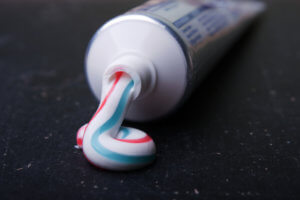
No one really needs a brightly colored toothpaste, but there are a surprising number of artificially colored toothpastes out there. For many reasons, you should stay away from all of them.
Artificial food dyes have been controversial for many years. There’s no real need to have them in food or personal care products, and they have been linked to a host of problems.
Most dyes are derived from petroleum— the same substance gasoline comes from— which should already be a red flag. It’s no surprise that multiple studies have found a connection between these dyes and health issues like hyperactivity, allergic reactions, and genotoxicity (damage to DNA).
The three most commonly used food dyes (Red 40, Yellow 5, and Yellow 6) also contain benzidene, a known human carcinogen.
Because of these concerns, many other countries have replaced artificial dyes with natural ones, but not the U.S. It’s up to you to watch out for them and avoid them— in food and toothpaste.
Artificial Flavoring and Sweeteners
Alongside synthetic dyes, artificial flavoring/sweeteners are very common toxins in toothpaste.
There’s a long list of potential artificial ingredients that could be in your toothpaste, but saccharin and aspartame are two to especially watch out for. Both are artificial sweeteners that have been increasingly linked to health problems.
It may surprise you to learn that saccharin, a very common sweetener, is actually derived from petroleum. (It’s enough to make you wonder how many synthetic substances aren’t made from petroleum.)
Older studies have linked saccharine to bladder cancer, and products that contained it once had to have a warning label attached. Because these findings were never “conclusively proven,” the warning was dropped and saccharine is considered “safe”.
However, it’s not an ingredient you want to be consuming and is also linked to allergic reactions and digestive upset.
Aspartame has major health-harming potential as well. Studies have shown that it may increase blood sugar and negatively affect your gut microbiome. It has also shown carcinogenic effects in lab research and should be avoided at all costs.
Fluoride
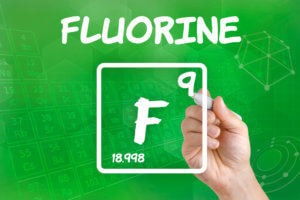
Fluoride toothpaste has been the standard for decades now. It’s no secret that this chemical is added for the purpose of cavity prevention, but it can accumulate in your body and do more harm than good.
While fluoride is a naturally occurring mineral in clean water, it is typically not a clean or natural substance by the time it ends up in your toothpaste.
Studies have already connected fluoride to hormone disruption, and too much of it can cause tooth discoloration (known as fluorosis), particularly in children who are likely to swallow toothpaste instead of spitting it out.
Even worse, animal studies have shown neurotoxic effects of fluoride, and other research has revealed a link between fluoride and developmental problems in children, including lower IQ.
Another problem is that fluoride is not only one of the most common toxins in toothpaste, it’s also a common toxin in drinking water. This means that fluoride will accumulate even more quickly in your body if you drink it and brush with it.
Parabens
Parabens are a group of chemicals used to preserve a wide range of products, including toothpaste. They have antimicrobial properties that prevent bacteria and other pathogens from growing but, unfortunately, come with major negative health effects.
The biggest problem with parabens is endocrine disruption.
They can mimic hormones within your body and affect reproductive health, including fertility. Because they have estrogen-like properties, some types of parabens are also connected to an increased risk of breast cancer.
There are likely even more uncovered effects of parabens because your endocrine system is linked to your entire body. That’s why many manufacturers— but not all— are ditching this group of chemicals.
They can hide out under many names, so look for anything which the word “paraben” in it, including methyl-, butyl-, and propyl-paraben.
Sodium Lauryl Sulfate (SLS)
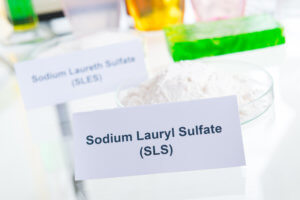
Sodium lauryl sulfate (SLS) is another common additive in many different products. It’s technically known as a surfactant and is also a foaming agent that helps create lather.
The purpose of SLS in toothpaste is to help it “foam up” into all the small spaces between your teeth and gums, but it does not actually help to clean your teeth.
Along with being potentially toxic to aquatic wildlife (and frequently sent down the drain), SLS can also majorly irritate your mouth. In people who are sensitive to it, SLS is known to cause mouth ulcers as well as skin irritation. Simply getting an SLS-free toothpaste has relieved many people of these ulcers.
Another surfactant, sodium laureth sulfate (SLES), is often used in “green” brands in place of SLS. However, you should avoid it as well because it’s most often contaminated with a carcinogen known as 1,4 dioxane.
Propylene Glycol
Propylene glycol is yet another of the toxins in toothpaste commonly derived from petroleum. It can come from other sources (including vegetables) but is most often found in synthetic form.
Also used in antifreeze, this colorless and odorless liquid is used to help toothpaste feel smooth in your mouth.
In large amounts, propylene glycol has been linked to liver, heart, and kidney damage as well as harm to the central nervous system. It can also cause allergic reactions and skin irritation in those who are sensitive to it. Also of note, its effects are increased for children and those with liver or kidney problems.
Now, there haven’t been any studies conclusively linking small amounts of propylene glycol to health problems (though it’s doubtful you want to be consuming a petroleum byproduct).
However, this ingredient is found in many places, including in medication. By getting it out of your toothpaste, you will limit your exposure and avoid any potential harm.
Carrageenan
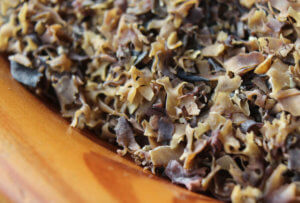
Carrageenan is a naturally derived ingredient, so you wouldn’t expect it to be toxic, but it can be for certain people. It comes from specific types of red seaweed (particularly Irish sea moss) and is mainly used as a thickener in foods and products like toothpaste.
The main problem with carrageenan as a “natural” ingredient is that it’s so processed it retains none of the nutritional value or health benefits of seaweed.
In addition, some studies have linked carrageenan to inflammation of the digestive tract and gastrointestinal issues. Degraded carrageenan has also demonstrated carcinogenic effects, although experts do point out that food-grade carrageenan is the only type used for human consumption.
Still, if you already suffer from any type of gastrointestinal disorder, it’s best to avoid carrageenan in food and toothpaste.
Interestingly, consuming carrageenan in its whole form through red seaweed is not linked to any toxic effects. (A good argument in favor of natural, whole foods!)
Titanium Dioxide
Titanium dioxide is commonly added to toothpaste to make it bright white.
That’s right, it has no benefits apart from giving your toothpaste a snowy and sparkling appearance.
The main reason titanium dioxide can be one of the most problematic toxins in toothpaste is the damage it can do to your gut. Studies have linked the nanoparticle form of titanium dioxide (also found in sunscreen) to a weakened intestinal barrier, decreased nutrient absorption, and gut inflammation.
To make matters worse, other research has determined that nanoparticle titanium dioxide is also potentially carcinogenic, may cause genotoxicity, and may harm immune function.
At this point, it’s really best to avoid this ingredient altogether.
Triclosan
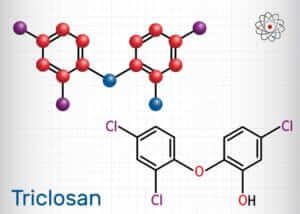
Triclosan is an antimicrobial ingredient that was once found in many types of hand soap before it was banned. It’s been linked to numerous health problems, including hormone disruption (particularly thyroid hormones), allergies, and even cancer.
Thankfully, the last brand to use triclosan in toothpaste (Colgate) has phased it out. However, triclosan is still a permitted ingredient in toothpaste, so it’s worth keeping an eye out for it.
Also, stay away from toothpastes that are labeled as “antibacterial”. Even though they are unlikely to contain triclosan, there are many other antibacterial chemicals that may have harmful effects and can disrupt the microbiome in your mouth that naturally fights off pathogens.
Diethanolamine (DEA)
Diethanolamine (DEA) is another ingredient added to toothpaste mainly for its foaming effect. Its chemical safety sheet labels it as an irritant, health hazard, and corrosive substance, yet you’ll find it in many everyday products.
Though human research is lacking, animal studies have shown toxic effects to the liver, kidneys, and central nervous system with long-term oral exposure to DEA. It also increased kidney and liver tumors with topical exposure, making it a potential carcinogen.
There are some related chemicals to watch out for as well, including any ingredient that ends in “ethanolamine”. Also, watch for the abbreviations DEA, TEA (triethanolamine), and MEA (monoethanolamide).
Chemical Whiteners
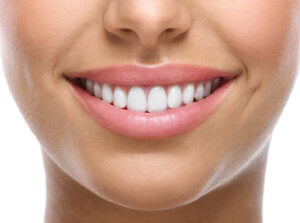
Nearly everyone these days wants white teeth (thanks in large part to toothpaste commercials). Unfortunately, many chemicals used to achieve this whitening effect are really toxins that don’t belong in toothpaste.
A good example of this are polyphosphates, a group of chemicals frequently used in whitening toothpastes. Many of them are corrosive and can cause skin and mouth irritation if you are sensitive.
Avoid them by looking for ingredients with the word “phosphate” at the end, like sodium hexametaphosphate, for example.
Even hydrogen peroxide, which is not normally considered “toxic”, can be harsh on your mouth and is best avoided.
The Issue with Glycerin in Toothpaste
Glycerin is another common ingredient in toothpaste that should be avoided but not necessarily because it is toxic.
While it can be derived from petroleum or animal fat (and these forms are not healthy), glycerin is also frequently derived from vegetables. As a vegetable-derived, non-GMO ingredient, glycerin has many beneficial uses and is a top ingredient in natural skincare because it hydrates and softens skin.
However, when it comes to your teeth, glycerin is not so beneficial.
The same properties that help glycerin to attract and hold moisture in your skin also appear to interfere with tooth remineralization, although there’s no conclusive evidence to back this up yet.
Still, there’s no reason glycerin needs to be in toothpaste (it’s mainly added for sweetness), so it’s best to look for a brand without it. It’s also frequently derived from GMO crops (like soy), which is another reason to avoid it.
What to Look for in a Natural Toothpaste
Now that you know all about the main toxins in conventional toothpaste, how do you find a better alternative?
Remember, just because a product has “natural” on the label, doesn’t mean it actually contains clean ingredients that are good for your health (or your teeth). Here are a few tips for finding a truly non-toxic toothpaste.
Read the Label
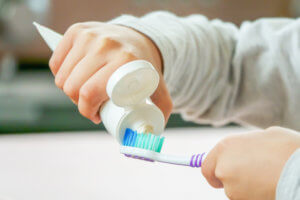
The first step, as always, is to read the label. There’s no other way to tell for sure whether your toothpaste contains toxic ingredients, and you should never trust marketing claims!
Look first for the toxins included in this article as they are some of the most common and most hazardous to your health. Any ingredients you aren’t sure of can be looked up in the EWG database for toxicity.
A bonus is finding a toothpaste that is certified non-GMO because this means any plant-based ingredients do not come from genetically modified sources.
Look for Natural Flavorings & Sweeteners
Instead of artificial ingredients, look for toothpaste that is naturally flavored with essential oils or plant-based extracts. It should also contain natural sweeteners like stevia or sorbitol. Xylitol is another natural sweetener, although there are some questions about whether it may negatively impact gut health.
Look for Natural Antimicrobial Ingredients
Using strong antimicrobial chemicals in your mouth can destroy the populations of good bacteria that naturally live there. Instead, look for natural ingredients that have antimicrobial properties. These are much gentler on your mouth and won’t upset your microbiome.
Some good choices include neem oil, tea tree oil, aloe vera, green tea extract, clove, and cinnamon. Baking soda is helpful for fighting bacteria that cause bad breath and helps clean your teeth with its abrasiveness.
Look for Natural Whiteners
There’s nothing wrong with wanting white teeth as long as you skip the chemical whiteners. Natural ingredients like charcoal, aloe vera, baking soda, and silica can work just as well but without the harmful side effects.
Top Recommendation: Wellnesse Whitening Toothpaste
If you are in the market for a top-notch and completely non-toxic toothpaste, look into Wellnesse Whitening Toothpaste.
Not only is it free of all the common toxins in toothpaste listed in this article (including no glycerin), it’s also certified non-GMO and contains 100% natural ingredients, like hydroxyapatite, that actually help your teeth to remineralize. It also whitens teeth and fights bacteria with a combination of green tea, aloe vera, and neem oil.
And the best part is this toothpaste actually works and doesn’t have a strange texture or “after residue” like many other natural toothpastes do. It’s good for your teeth, good for your health, and feels good while you use it.
Learn more about Wellnesse Whitening Toothpaste here for a cleaner mouth— in more ways than one!

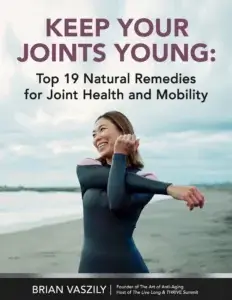
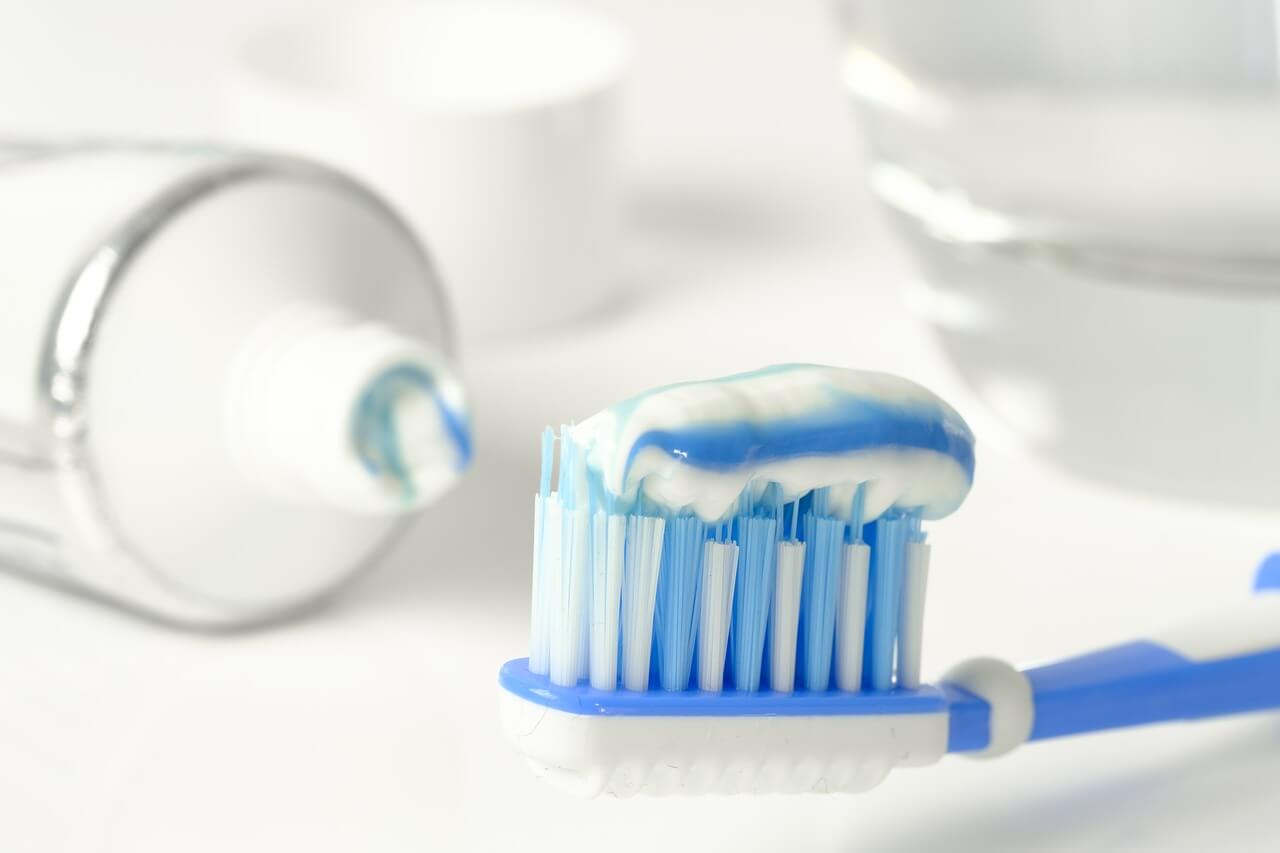
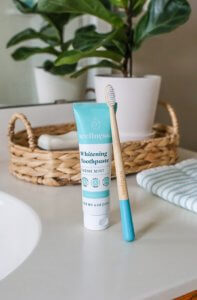
Once I became health-conscious and stopped using commercial toothpastes, I made a surprising discovery: my toothbrush stopped accumulating plaque-like material at the root of the bristles. Even at the end of 3 months (the period recommended for changing a toothbrush) there was NOTHING in my bristle roots! Conclusion: commercial toothpaste is the culprit and the cause of toothbrush build-up. It’s all about marketing and making you spend. Don’t get me wrong. I’m not saying that you shouldn’t change your toothbrush periodically. I now use a combination of baking soda mixed with other natural things, and I haven’t looked back since.
Very good information. Thanks
Great overview of what everyone deserves to know!
Thank you very much for this wonderful article! I knew somethings about bad products in toothpastes, but not in so much detail as you have presented it to us. I will try to be more careful as to what kinds of toothpaste I buy in the future. I learned so much, and I thank you, again.
Thank you for all the valuable health information you disseminate, Brian. I have taken many of your recommended podcasts & read many of your “articles of health”. You are a rare & trusted source.
Aloha,
Emilie Azeka
I was a caregiver to my mother after my Father died. I took her shopping every week, and I noticed she bought aspartame to sweeten her coffee and food, because she also had age related diabetes and gave up sugar. In her late 70’s when she started to have problems with her eyesight and had cataracts removed her sight continued to get worse. After hospitalization I removed the aspartame from her house before she came home, mostly because I had previously had very bad reactions to it in gum, soft drinks and other products and when ai discontinued that sweetener those reactions stopped. My Mother also went to health habilitation and was much better and her eyesight was somewhat better when she returned home. Then in her 80’s I took over her shopping and cooked for her with all foods from scratch. she continued to be active and healthy, but wanted to do her own shopping and she purchased aspartame again, after a while she could no longer read or watch TV and her memory, which was better than mine before, continue to decline, and her digestion took a turn for the worse, until I could no longer care for without help, and she landed in the hospital again at 87 years old and died in hospital.
Good and useful information. Thank you!
Thank you for the great information. In addition to note using a product for my teeth that’s all natural, I now am using a product that is not packaged in plastic. Thankfully there are many more products available today that are kind to our bodies and our planet.
Thank you for your interesting article. Last spring (2022), I had a sudden allergic reaction to a toothpaste that I had been using for years. My day always started using this product and to have a problem with toothpaste was quite unsettling. I started searching for a “natural” toothpaste and found one that does not contain fluoride – which seemed to be the cause of my problem. Thank you also for the recommendation – it’s great to have other clean choices!
wow! so much to look out for. t
Thank you for this information.
I really appreciate this article. I have known for years that ingredients like fluoride, triclosan, and titanium dioxide were not good to put into your body. So, I would search for toothpaste that didn’t have the bad. It seemed that I always had to select the lesser of the evils. I had been dealing with some immune issues and was going down a list of things to eliminate. After doing some searching I found Redmon Earth Paste. I wasn’t aware of Wellness Whitening toothpaste so now I will have to try it. Thank you again for this article.
Great article on toothpaste. Everyone should use natural products when at all possible.
I gave up on Jason’s brand and am looking at Burt’s Bees fluoride free right now. Even it has carrageenan and titanium dioxide. I’m looking for other options right now. I’ve made my own using aluminum free baking soda with essential oils. I’ve also used activated charcoal, but both options are too abrasive for frequent brushing.
JFYI, I have had severe inflammation from Nature’s Bounty Brand melatonin. At first I thought it was the tooth paste, but it’s an ingredients in the melatonin that kept me up all night with sore gums and stomach. We even have to be selective with supplements. Thank you for the information on toothpaste
Many important informations abou the toxins in tooth paste. Thank you for this job
Thank you so much for this valuable information on Toothpaste.
Thank you for such interesting and valuable information on toothpaste ! I use a natural floride free toothpaste now. However, as you have stated this toothpaste may also have toxic
ingredients in it. Unfortunately, I m not familiar or understand the toxicity of some of those ingredients. How can it approved or labelled as natural if it has all these toxic chemicals in it?